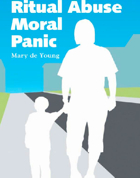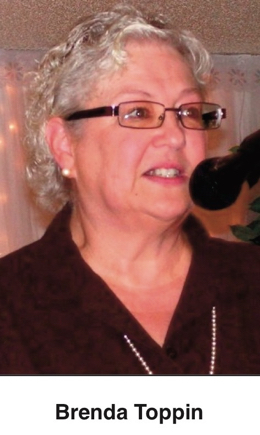Rascals case in brief
In the beginning, in 1989, more than 90 children at the Little Rascals Day Care Center in Edenton, North Carolina, accused a total of 20 adults with 429 instances of sexual abuse over a three-year period. It may have all begun with one parent’s complaint about punishment given her child.
Among the alleged perpetrators: the sheriff and mayor. But prosecutors would charge only Robin Byrum, Darlene Harris, Elizabeth “Betsy” Kelly, Robert “Bob” Kelly, Willard Scott Privott, Shelley Stone and Dawn Wilson – the Edenton 7.
Along with sodomy and beatings, allegations included a baby killed with a handgun, a child being hung upside down from a tree and being set on fire and countless other fantastic incidents involving spaceships, hot air balloons, pirate ships and trained sharks.
By the time prosecutors dropped the last charges in 1997, Little Rascals had become North Carolina’s longest and most costly criminal trial. Prosecutors kept defendants jailed in hopes at least one would turn against their supposed co-conspirators. Remarkably, none did. Another shameful record: Five defendants had to wait longer to face their accusers in court than anyone else in North Carolina history.
Between 1991 and 1997, Ofra Bikel produced three extraordinary episodes on the Little Rascals case for the PBS series “Frontline.” Although “Innocence Lost” did not deter prosecutors, it exposed their tactics and fostered nationwide skepticism and dismay.
With each passing year, the absurdity of the Little Rascals charges has become more obvious. But no admission of error has ever come from prosecutors, police, interviewers or parents. This site is devoted to the issues raised by this case.
On Facebook
Click for earlier Facebook posts archived on this site
Click to go to
Today’s random selection from the Little Rascals Day Care archives….
Click for earlier Facebook posts archived on this site
Click to go to
Today’s random selection from the Little Rascals Day Care archives….
Parents ill-prepared to practice psychology
Nov. 28, 2011
 “The Little Rascals case offers a trove of testimony illustrating how immersion into the popular psychology of sexual abuse gave parent-experts the terms and concepts to retrospectively interpret their children’s behaviors and emotions, and to do so with the ring of authority….
“The Little Rascals case offers a trove of testimony illustrating how immersion into the popular psychology of sexual abuse gave parent-experts the terms and concepts to retrospectively interpret their children’s behaviors and emotions, and to do so with the ring of authority….
“One mother testified that once she had learned the psychology of sexual abuse, she realized her child’s denial that anything untoward had happened at the day care center actually was a sign that he had been sexually abused.”
– From “The Day Care Ritual Abuse Moral Panic” by Mary De Young (2004)
Authorities misled parents by cherry-picking evidence
 March 27, 2013
March 27, 2013
“Authorities fed… parents and public (in Edenton) a biased reading of the evidence, but few realized it was biased.
“Consider the following: John and David, two friends in the day care, are both questioned. John says he and David were both molested, but David says it didn’t happen. Thus the evidence is 50/50 on John and 50/50 on David. They can’t be both right.
“What now? If David keeps denying, he is dropped from the investigation, and the negative evidence on John exits with David. Meanwhile, John’s parents are not told that David denies, and John’s case goes ahead. From 50/50, the allegation has become 100 percent true.
“For this investigation to inevitably produce more victims of abuse, three things are necessary:
“1. Parents are told that their child was named by others as abused, but not told that their child was not abused according to still other children.
“2. Parents are told that denial by their child is a sign of abuse and that therefore the child should be questioned by therapists until he admits.
“3. In some therapy sessions, the children do disclose even if they were not abused.
“Did the prosecution in the Little Rascals investigate in such a manner? The (North Carolina) Appeals Court certainly was of that opinion. It was the principal reason the convictions of Robert Kelly and Dawn Wilson were overturned.”
– From “Why False Beliefs Prevail: the Little Rascals Child Sex Abuse Prosecutions” by Anthony Oberschall in “Essays in Honor of Raymond Boudon” (2000)
Oberschall doesn’t use the term, but I’m reminded of the widespread and pernicious “file drawer effect” – that is, “the practice of scientific researchers to file away studies with negative outcomes.”
Kids say the darndest things… eventually
 April 24, 2015
April 24, 2015
“As was made clear repeatedly upon testimony by experts, the very first reports of the children were the ones that would be most critical in determining whether sexual abuse had indeed occurred. Yet in the first interviews, the children said almost nothing of any interest with regard to sexual abuse, and the police officer who conducted these hearings destroyed all of her notes and all of her tapes of what happened before the case went to court. She was approached by several of the mothers initially because she had taken a short course in investigating cases of child abuse.
“Officer (Brenda) Toppin was crucial to the whole process because she was the one who escalated the case from a minor complaint by one parent into a case of massive sexual abuse of dozens of children by scores of day-care workers.”
– From “Understanding The Crucible: A Student Casebook to Issues, Sources, and Historical Documents” by Claudia Durst Johnson and Vernon Johnson (1998)
Oh, those spoilsports, voicing ‘disbelief and skepticism’
April 3, 2013
In my fruitless attempt to extract a retraction from the journal Child Abuse & Neglect, I quoted only the abstract of “Sexual Abuse of Children in Day Care Centers” by Susan J. Kelley, Renee Brant and Jill Waterman.
But because the 1993 article continues to be cited in the literature – most recently in the International Journal of Law and Psychiatry – it deserves a more detailed review.
Most offensive to me is the authors’ use of ostensibly sophisticated statistics. For example: “The mean number of different types of sexual acts per child ranged from 5.3 sexual acts per child in (Kathleen Coulborn) Faller’s (1988) sample to 6.6 different types of sexual abuse per child in Kelley’s (1989) study.”
Can’t you just picture the authors’ computers straining under the weight of all their meticulous research? In reality, of course, the “mean number of different types of sexual acts per child” was… zero.
And the anecdotes! What ever were Kelley, Brant and Waterman thinking as their fingers typed such unfounded claims as these:
- “Foreign objects used to penetrate children in day care center cases have included such items and pencils, needles, knives, scissors and crucifixes.”
- “Allegations of pornographic photographs and videos being taken of children in day care center cases sometimes surface…. Unfortunately, in very few cases have law enforcement officials been able to locate the pornography.”
- “Children who have been ritualistically abused describe participation in group ceremonies, use of chants and songs, adults dressed in costumes and masks, threats with supernatural powers….the sacrifice of animals, the ingestion of blood, feces and urine, and murders.”
Despite the authors’ unbridled certitude, they can’t help complaining that “One of the first complications in the evaluation of ritualistic abuse cases is the frequent disbelief and skepticism on the part of the professionals secondary to the bizarre and extreme nature of the allegations.”
“Complications,” indeed.











0 CommentsComment on Facebook